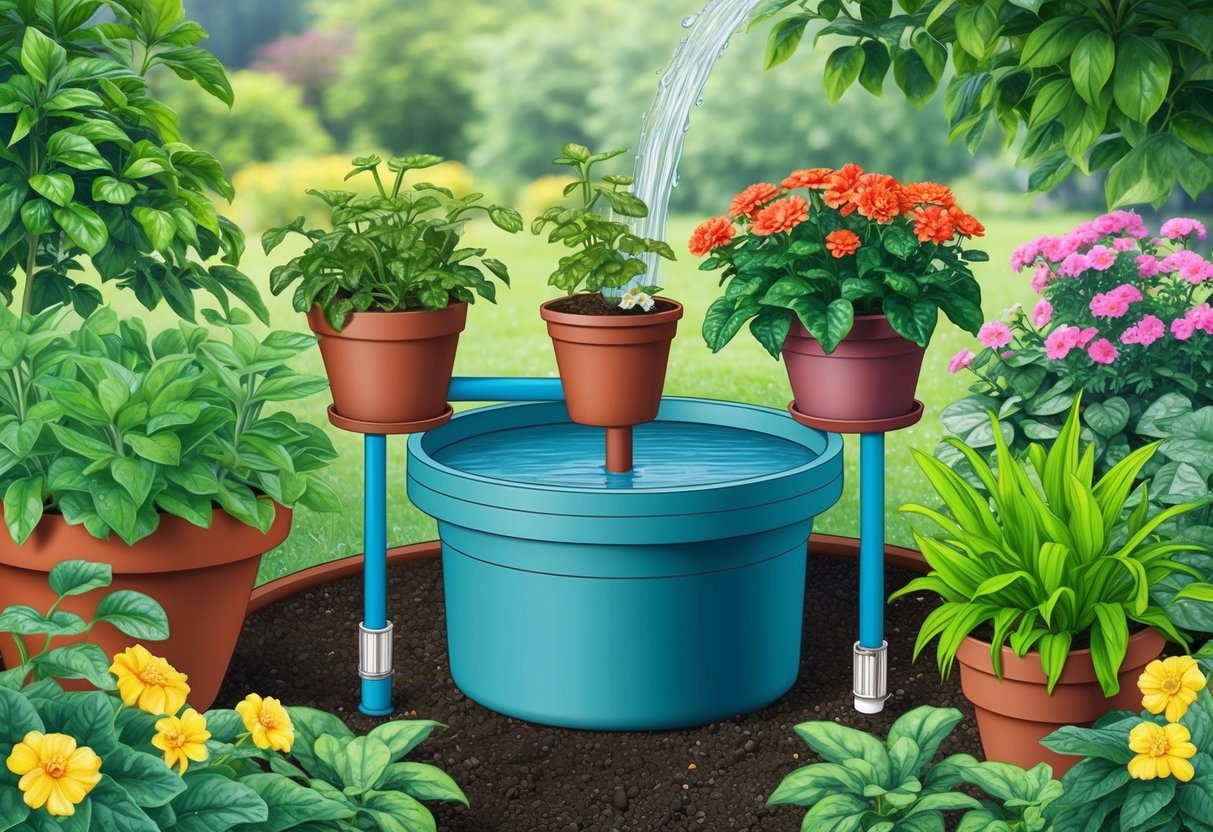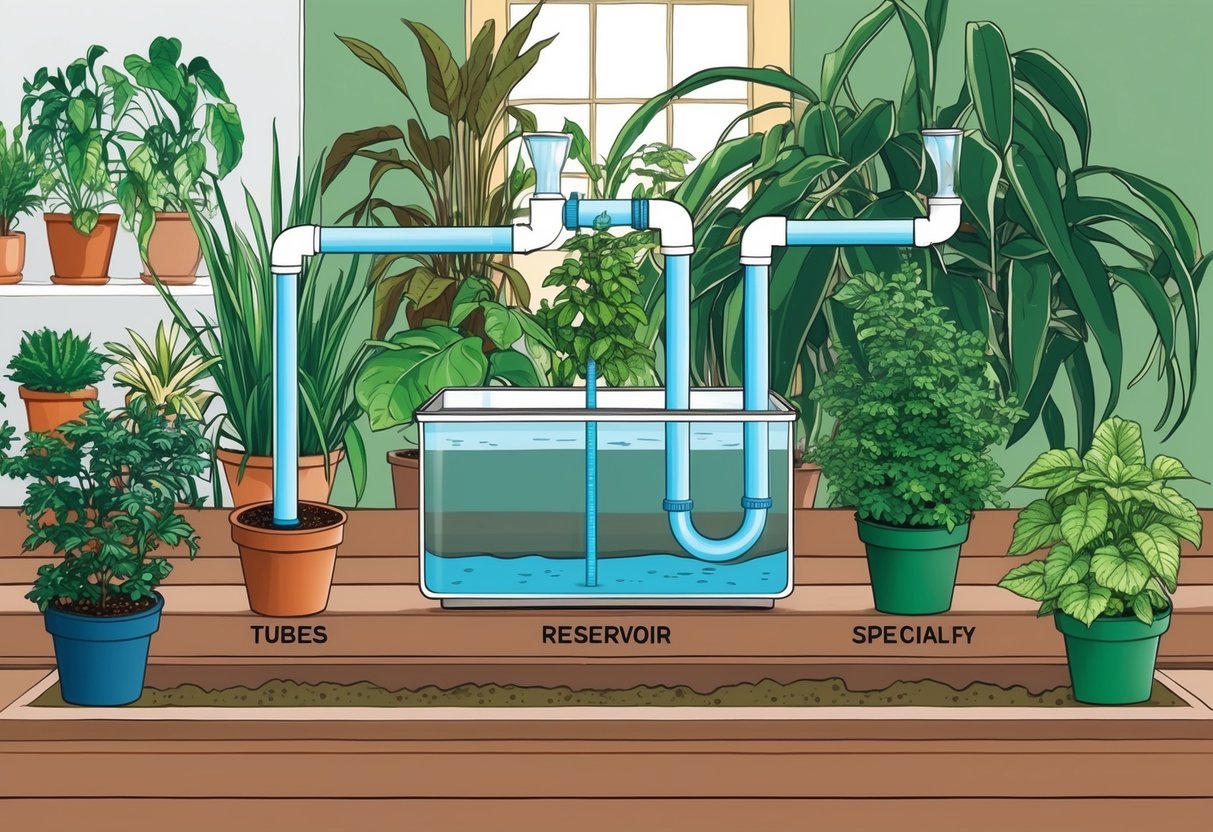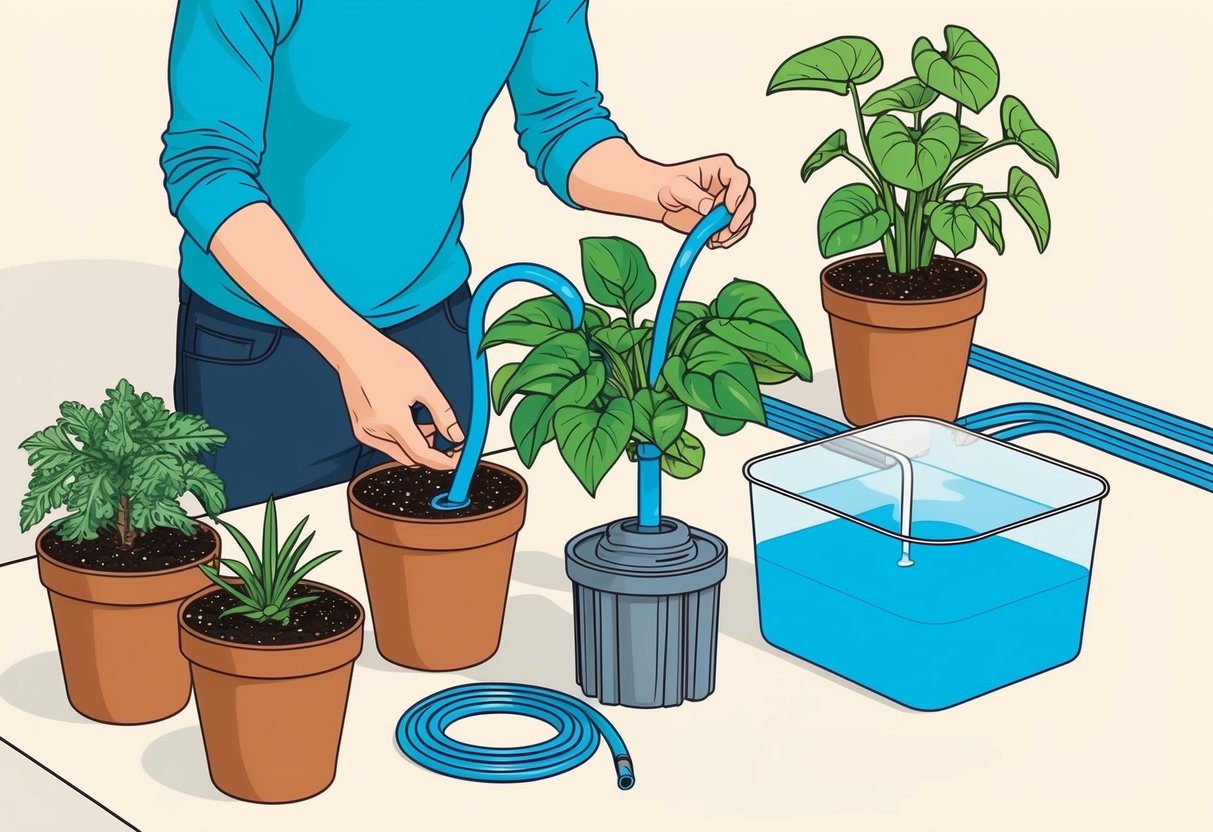
Adapting Systems for Indoor and Specialty Plants

Building a self-watering system for indoor and specialty plants requires thoughtful consideration of plant types, room conditions, and the capacity for customization. Houseplants, especially cactus and succulents, benefit from approaches tailored to their unique watering needs and habits.
Self-Watering Solutions for Indoor Gardens
Indoor plants thrive when water is delivered consistently but not excessively. Self-watering systems such as programmable drip irrigation kits or devices with integrated water timers provide a controlled, steady supply, helping to avoid both under-watering and over-watering problems.
Smart indoor watering devices can monitor soil moisture, automatically adjusting the watering schedule as needed. Many modern setups allow custom programming for households with varied plant types, making management easy and efficient.
These systems can work for up to 15 potted plants and are often suitable for houseplants with similar needs. Options for indoor self-watering include automatic drip irrigation kits, self-watering globes, and DIY wick systems.
For those seeking more convenience, advanced models feature smart humidity detection and programmable timers, requiring minimal manual intervention.
Watering Requirements for Cactus and Succulents
Cactus and succulents need much less water than other houseplants. Their self-watering solutions should deliver limited but reliable moisture to prevent root rot.
Drip emitters with extremely slow flow or adjustable settings are best, as they mimic natural arid conditions. For these plants, the watering reservoir should allow soil to dry out completely before refilling.
Set timers or moisture sensors to infrequent intervals, as these species prefer to stay dry for longer periods. Avoid using standard self-watering pots designed for thirsty plants, as they hold excess water and raise humidity, which is unsuitable for cacti.
Placing cacti and succulents in well-ventilated spots near windows further reduces moisture buildup. Always choose soil and pot materials that drain efficiently to complement any automatic watering approach.
Frequently Asked Questions

What are the essential components I need to build my own self-watering garden system?
A practical self-watering garden system requires a water reservoir, a planting container, a wicking mechanism, overflow drainage, and a fill tube or port. Each part contributes to moisture control and prevents both underwatering and overwatering.
Typical materials include plastic bins, sub-irrigation wicks, and water-level indicators.
How can I create a self-watering system for my outdoor plants that’s efficient and low maintenance?
Gardeners often use large reservoirs and capillary mats or wicks to keep soil consistently damp in outdoor setups. Placing overflow holes at the right height above the base prevents root rot by ensuring excess water escapes.
Utilizing a deep water basin and shade for the reservoir helps reduce evaporation and extends the refill interval. For a detailed explanation, visit this step-by-step guide to self-watering planters.
Can you provide a step-by-step guide for creating a DIY automatic watering system for potted plants?
Start by selecting sturdy containers for the pots and a separate vessel as the water reservoir. Drill an overflow hole a few centimeters above the reservoir base.
Insert a wicking material, such as cotton rope, through the soil into the reservoir. Fill the outer chamber with water and use the wick or capillary action to draw moisture into the potting mix as needed.
More information can be found in this self-watering planter FAQ.
What are some innovative ways to repurpose household items into self-watering planters?
Plastic bottles and food storage containers can be converted into miniature self-watering planters by cutting and stacking them to create a chamber for water and a soil compartment above. Cotton shoelaces, old sponges, and fabric strips work as capillary wicks.
Even buckets with fitted lids make practical reservoirs for larger outdoor systems. Learn more about these approaches in the DIY system guide.
What are the limitations of self-watering systems and which plants might not thrive in them?
Plants that prefer dry soil, such as succulents and cacti, often struggle in self-watering setups due to constant moisture. Some systems may promote root rot if not properly maintained or if overflow drainage is missing.
Woody ornamentals and certain herbs may perform best in traditional pots or raised beds.
What is the best approach to ensure my plants are watered while I’m away on a two-week vacation?
A well-sized reservoir can supply enough water for up to two weeks if properly filled and maintained. Before leaving, make sure the overflow drains are clear and capillary action is working.
Group planters together in a shaded, sheltered spot to minimize evaporation. A reliable self-watering planter system reduces the risk of underwatering over extended absences.